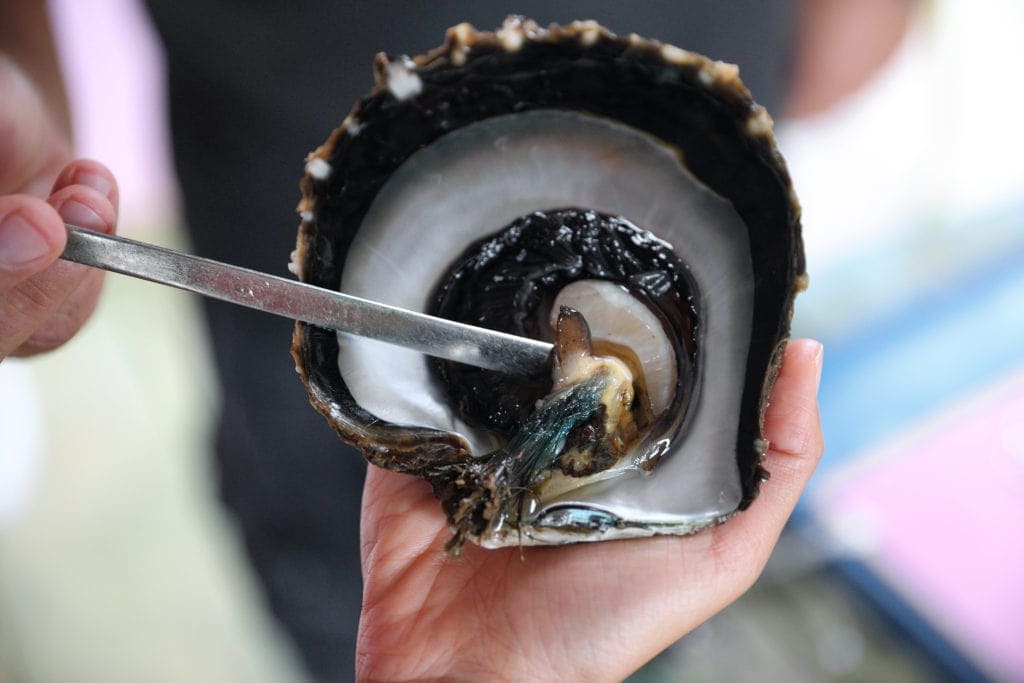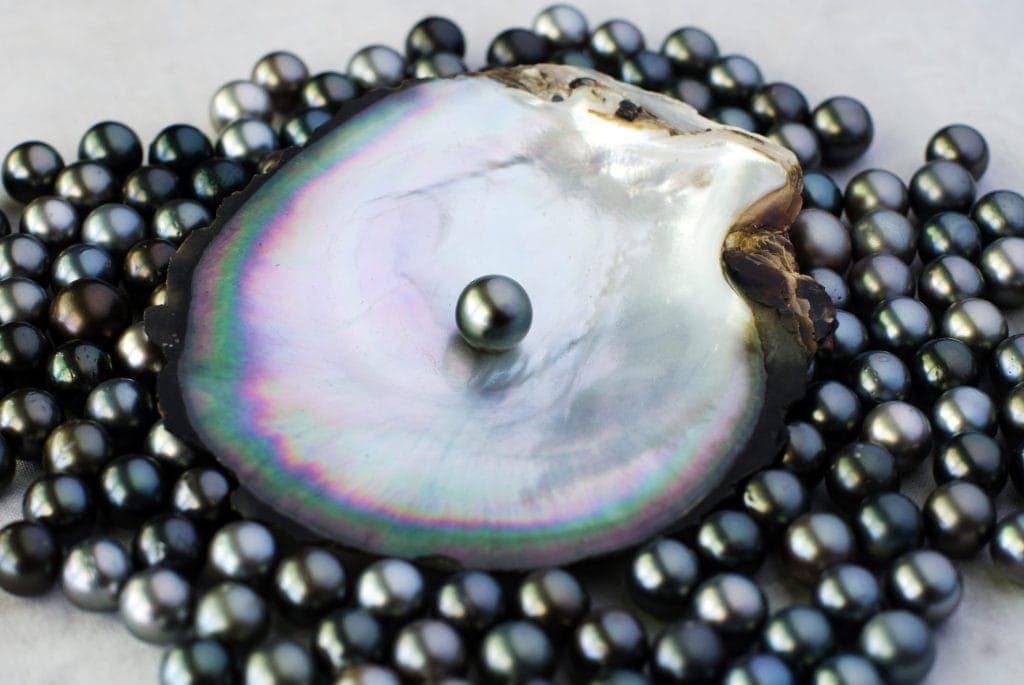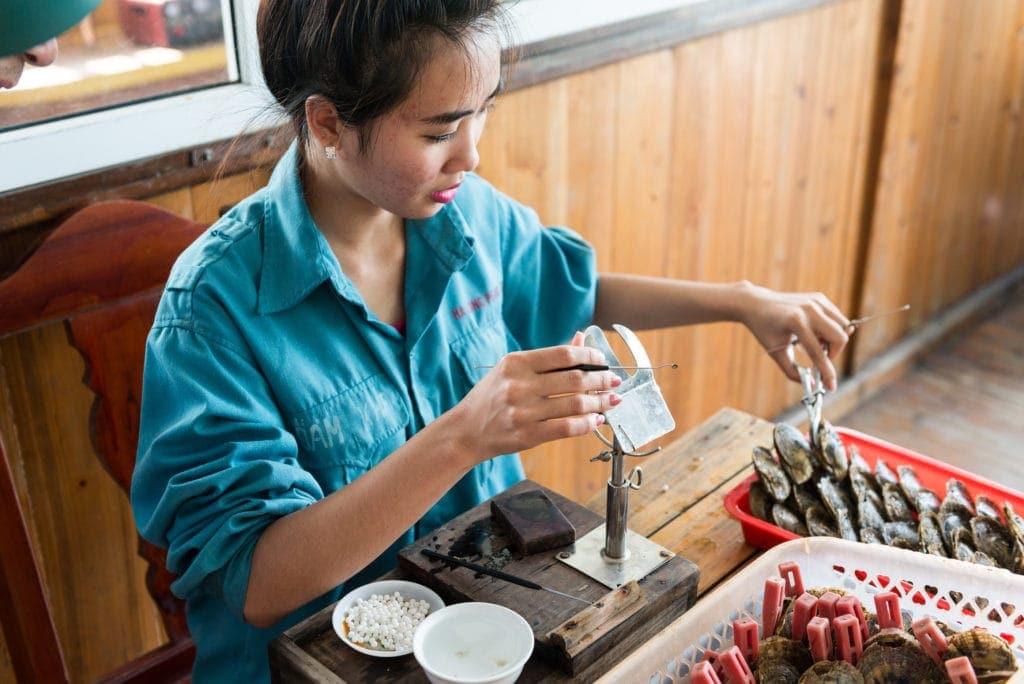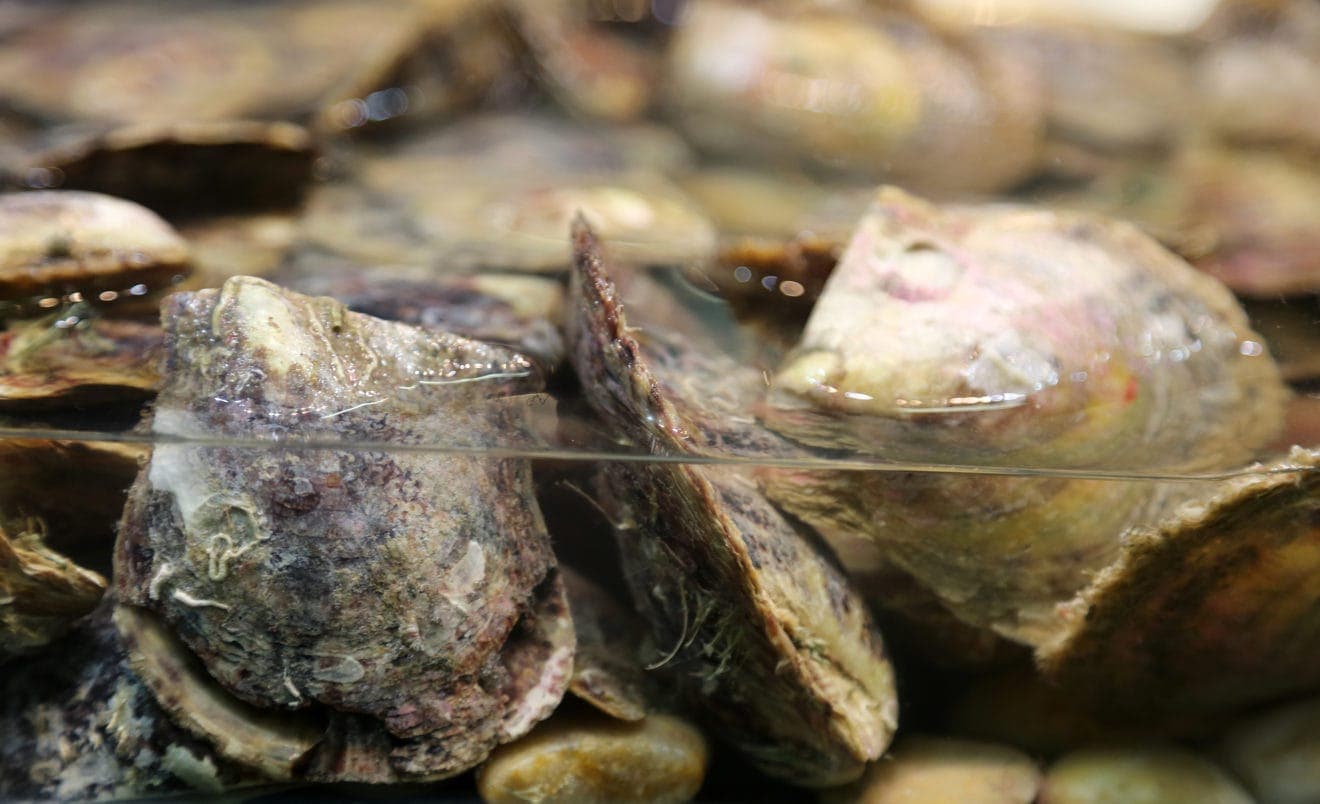For the longest time, people had no understanding of how pearls were formed, which gave rise to many myths about pearl origins. From the religious to the spiritual, these myths tried to explain how these amazing gemstones came to be.
Today, however, we understand very well why and how oysters make pearls. Pearls, in essence, are the result of an accident, a byproduct of a mollusk’s defense mechanism. Let’s take a look at this simple yet fascinating process.
What Are Oysters Exactly?
To understand how and why pearls are formed we must first understand the creatures that form them. Oysters are not the only creatures that make pearls, with mussels, clams and scallops being some others.
Oysters, similar to mussels and clams, are bivalve mollusks. This means that while they don’t have an internal skeletal structure, they do have an external shell that’s made of two parts, called “valves”. These valves remain attached to one another through an elastic ligament that’s also a part of the oyster itself. The purpose of the ligament is to move the two halves of the oyster shell, keep them open while the oyster is eating, which is most of the time, and close them when necessary.
Oysters create and expand these valves as they grow by secreting a material called “nacre”. This material is produced in the mantle of the oyster and lines the inside of its shell. It’s a rather sturdy mineral which gives the oyster’s shell its durability.
So, how does all that relate to pearls?
How Are Pearls Made In Nature?
Pearls are essentially just nacre formations around small objects that sometimes find their way into an oyster’s interior. Oysters secrete nacre on top of things, such as a parasite or stone, for the sole purpose of protecting their own soft tissue from the foreign object. Because the nacre mineral is secreted in small quantities over a long period of time, the end result is a beautifully layered pearl with a smooth surface.
The shapes of such natural pearls can vary but more often than not they are spherical or oval in shape. Once the pearl grows enough the oyster can spit it out comfortably. That’s, of course, unless a fisherman hasn’t already found the oyster and harvested the pearl from it.
From that point of view, you can easily say that divers for wild pearls are essentially performing a free service for the oysters by getting rid of what’s been irritating them – oyster dentists of sorts.
Of course, nowadays the vast majority of pearls sold commercially, whether from oysters or mussels, are actually cultivated and not gathered from wild oysters. So, does the process of formation of cultivated pearls differ from the natural process?
How Are Cultivated Pearls Formed?

The principle behind the creation of cultivated pearls is essentially the same as with wild pearls – oysters and mussels just secrete nacre over of foreign objects that irritate them, thus creating pearls.
The difference here is that the object of irritation is placed inside the oyster using invasive procedures to ensure the creation of pearls.
The Difference Between Saltwater and Freshwater Pearl Cultivation
Saltwater cultured pearls such as the famous Akoya pearls are made through a process called “bead nucleus”. Through it, the pearl farmers insert a single and perfectly round bead inside the oysters. The ideal round shape of the bead increases the probability that the pearl the oyster will create from it will also have a perfectly round shape.
Because such pearls are created one at a time and because each pearl takes several years to form, such Akoya pearls are farmed in small quantities. That, together with their perfectly round shapes makes them very highly valued and expensive.
Farmed predominantly in China, freshwater cultured pearls usually form in mussels and not in oysters, although the core principle behind their formation is essentially the same. Unlike saltwater pearls, however, freshwater ones are usually produced at a rate of 24 to 32 at a time from a single mussel. If that sounds impressive, just several years ago, before refining the process, Chinese farmers used to cultivate up to 50 pearls at a time from a single mussel.
To achieve these impressive quantities, farmers don’t put a single bead nucleus per mussel or oyster, but instead, make 24 to 32 small incisions in the soft tissue of the mollusk. These incisions are often enough for the mussels to start secreting nacre into them even without the presence of a bead.
The end result of that is not just a much larger quantity of pearls but also pearls with much thicker nacre content. However, freshwater pearls are also typically irregular in shape. While the latter is normally viewed as a negative, the thicker nacre layers of freshwater pearls can be quite positive since it makes them much more durable and long-lasting than saltwater Akoya pearls.
Either way, the optimized process of production of freshwater pearls has made them the most affordable and abundant type of pearls on the market.
How Do Oysters Make Colored Pearls?
Even if you’ve just started researching about pearls and pearl jewelry, you likely know that they can come in a large variety of colors. While white pearls are the most traditional and popular type, they can also be black, grey, pink, cream, peach, green, blue, purple, and more.
How does that happen, however? Do pearl farmers also inject oysters with some coloring agents to facilitate the creating of colorful pearls?
No, not at all.
Most colored pearls are perfectly natural just like white ones (unless they’ve been dyed). The color of each individual pearl is not coincidental, of course, and is instead dependent on the natural pigments that are usually present in different oysters and mussels.
When they try to guess what color pearl each oyster is going to produce, pearl farmers typically look at the lip of the oyster – if it has a certain distinct coloring, chances are that its pearls will also have it. After all, the nacre that creates the pearl is the same nacre the oyster uses to create its shell.

The coloring on the lip of the oyster is what gives the pearl its hue.
Black pearls, for example, are commonly produced from black-lipped oysters and doesn’t form in other types of oysters. In the past, black pearls were very rare and highly valued as fishing for black-lipped oysters in the South Pacific was quite difficult. Today, the only natural black pearls are Tahitian pearls, which are cultivated and farmed, making them more affordable and available than in the past.
Are Certain Pearl Types More Valuable Than Others?

Extracting pears from the mollusk.
The main varieties of pearls are Freshwater, Akoya, Tahitian and South Sea. These each have their unique characteristics and colors, as well as value. The most valuable of the four main types are South Sea pearls, often called the Rolls Royce of pearls. They’re larger, take longer to form and are rarer with a distinct luster. The most affordable are freshwater pearls.
All these pearl varieties are formed in the same way by either a mussel (freshwater pearls) or oysters (other varieties). However, the cultivation processes and mollusk for each have differences, which result in the distinct look of each variety.


